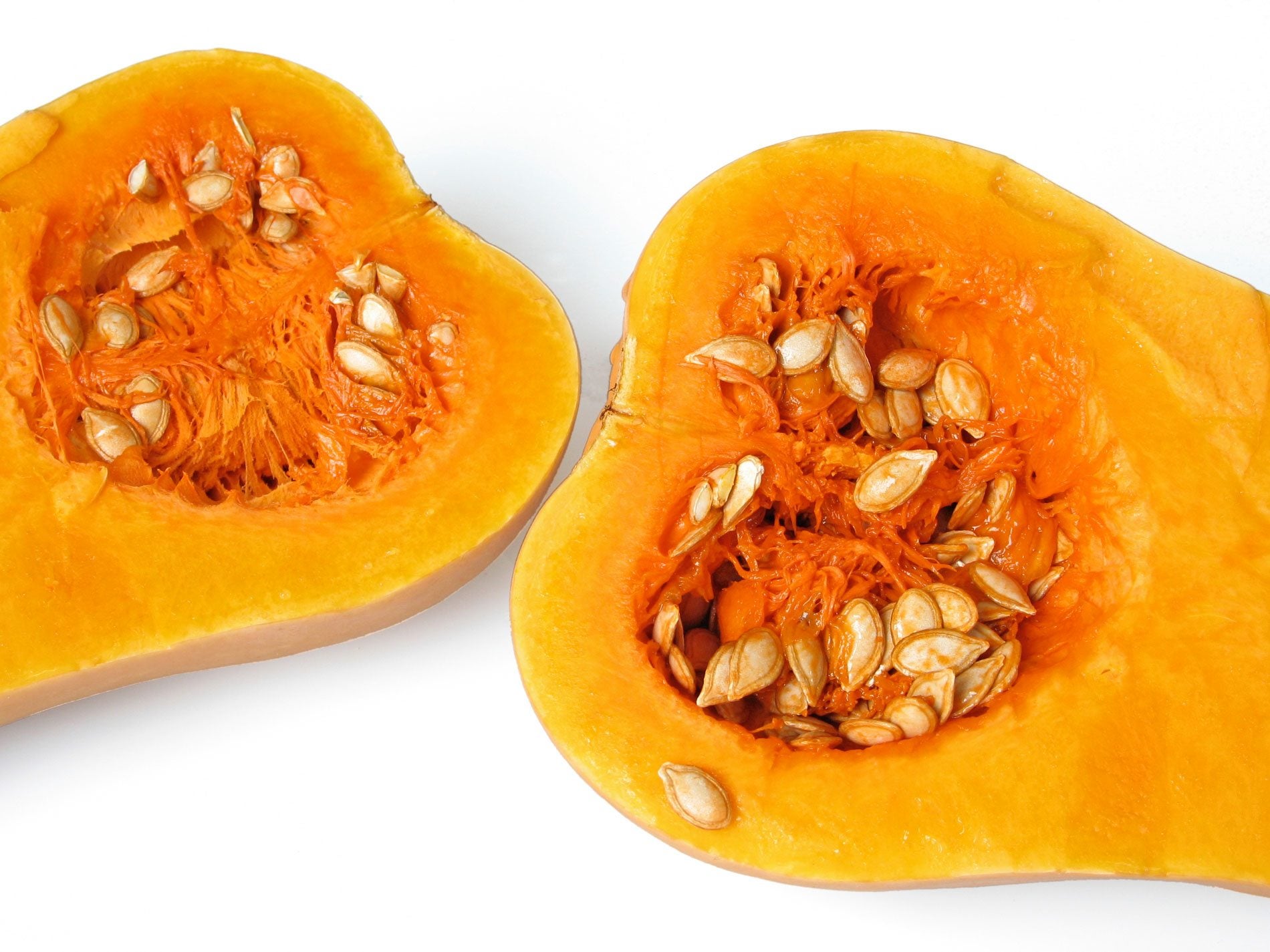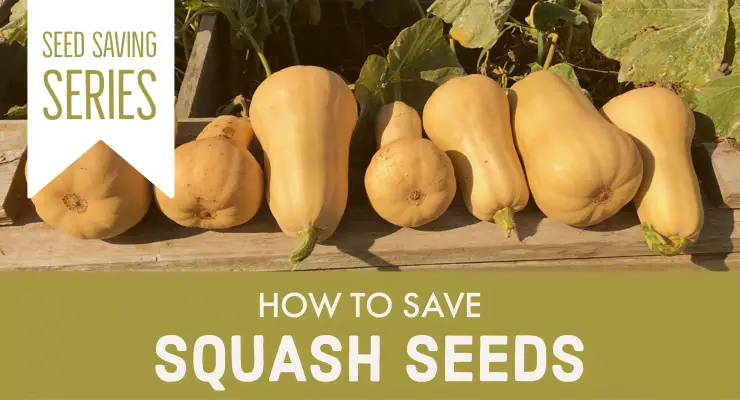So you’ve just harvested a delicious batch of butternut squash from your garden, and now you’re left wondering what to do with all those seeds. Well, fear not! In this article, you’ll learn the simple yet rewarding process of harvesting and saving butternut squash seeds. From when to harvest the squash to how to properly clean and dry the seeds, you’ll soon be equipped with all the knowledge you need to preserve and store these golden gems for future planting or snacking. Let’s get started on this exciting seed-saving adventure!
Harvesting Butternut Squash Seeds
Harvesting butternut squash seeds is a rewarding process that allows you to save and replant the seeds for future growing seasons. By selecting a fully mature squash, preparing it for harvesting, extracting the seeds, and cleaning them, you can ensure successful seed saving.
Choosing a Fully Mature Squash
To harvest butternut squash seeds, it is crucial to choose a fully mature squash. Look for squash that has developed a hard exterior and has a rich tan or beige color. Additionally, pay attention to the stem. If it is dry and corky, it is a sign that the squash is ready for harvesting.
Preparing the Squash for Harvesting
Before you can extract the seeds, you need to prepare the squash for harvesting. Start by cutting the squash open lengthwise, using a sharp knife. Scoop out the flesh and seeds from the center of the squash using a spoon. Be careful not to damage the seeds in the process.
Extracting the Seeds from the Squash
Once you have removed the flesh, it’s time to extract the seeds from the squash. Place the seeds and any attached flesh in a bowl of warm water. Gently agitate the seeds to separate them from the pulp. The viable seeds will sink to the bottom, while the pulp and any non-viable seeds will float to the top.
Cleaning the Seeds
After extracting the seeds, it’s essential to clean them thoroughly to remove any remaining pulp or debris. Transfer the viable seeds to a fine-mesh strainer and rinse them under running water. Gently rub the seeds between your fingers to remove any stubborn pulp. Once clean, spread the seeds out on a paper towel or a clean, dry surface to air dry.
Drying Butternut Squash Seeds
Properly drying the butternut squash seeds is crucial in preserving their viability and preventing mold and rot. Whether you choose to remove excess pulp, air dry the seeds, use a dehydrator, or check for dryness, these steps will help ensure successful drying.
Removing Excess Pulp
Before drying the seeds, it’s recommended to remove any excess pulp that may still be attached. Using a damp cloth or paper towel, gently blot the seeds to remove any remaining pulp while being careful not to damage the seeds. This step will help prevent mold growth during the drying process.
Air Drying the Seeds
One of the simplest methods for drying butternut squash seeds is to allow them to air dry naturally. Spread the cleaned seeds in a single layer on a clean, dry surface or a paper towel. Place them in a well-ventilated area away from direct sunlight and let them dry for approximately one to two weeks.
Using a Dehydrator
If you prefer a faster drying method, a dehydrator can be used to expedite the process. Arrange the cleaned seeds in a single layer on the dehydrator trays, ensuring they are evenly spaced. Set the dehydrator to a low temperature, around 95°F (35°C), and allow the seeds to dry for approximately 24 to 48 hours until they are completely dry.
Checking the Seeds for Dryness
To determine if the butternut squash seeds are adequately dry, conduct a simple dryness test. Squeeze a few seeds between your fingernails, and if they break easily without any moisture, they are ready for storage. If the seeds are still pliable or give off moisture, they require further drying time.
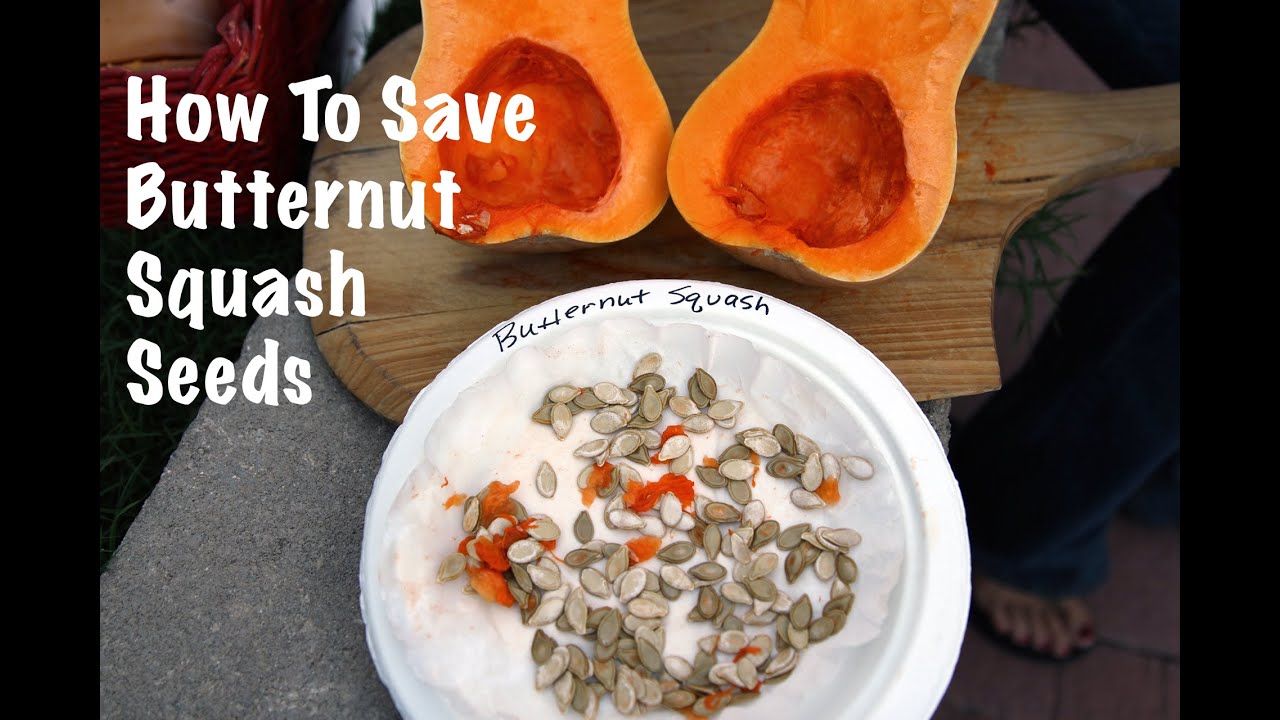
Storing Butternut Squash Seeds
Proper storage of butternut squash seeds is crucial to maintain their viability and ensure their longevity for future planting seasons. By choosing the right storage container, using desiccants, labeling and dating the seeds, and storing them in a cool and dry place, you can maximize the seed’s potential.
Choosing the Right Storage Container
To store butternut squash seeds properly, select an airtight container that will protect them from moisture, temperature fluctuations, and pests. Options include glass jars with tight-fitting lids, plastic containers with sealing mechanisms, or sealed envelopes. Make sure the container is clean and dry before adding the seeds.
Using Desiccants
Desiccants help absorb any residual moisture in the storage container and prevent mold or rot from affecting the seeds. Place a small packet of desiccant, such as silica gel or rice grains, inside the storage container with the seeds. This will help maintain a dry environment and preserve the seeds’ quality.
Labeling and Dating the Seeds
To avoid confusion and ensure the freshness of your saved butternut squash seeds, it is essential to label and date the container. Use a waterproof marker or a label to clearly indicate the variety, date of harvest, and any additional information you may find necessary. This will make it easier to track and rotate your seed collection.
Storing in a Cool and Dry Place
For long-term viability, store the butternut squash seeds in a cool and dry place. The storage location should have a stable temperature between 32°F (0°C) and 50°F (10°C) and low humidity levels. A basement, root cellar, or a refrigerator’s vegetable drawer can be ideal storage spots to keep the seeds in a dormant state until the next planting season.
Tips for Successful Seed Harvesting
To ensure a successful seed harvest, consider the following tips that can improve both the quality and quantity of your butternut squash seeds. From selecting healthy squash plants and allowing them to fully ripen to avoiding cross-pollination and harvesting seeds from multiple squash, these tips will help you become an expert seed saver.
Selecting Healthy Squash Plants
Start by selecting healthy squash plants that show no signs of disease or pest damage. Look for sturdy plants with vibrant foliage and well-formed fruits. Healthy plants have a higher chance of producing viable seeds that will result in healthy and robust plants in the future.
Allowing the Squash to Fully Ripen
To ensure mature and viable seeds, allow your butternut squash to fully ripen on the vine. The squash should have a hard exterior and a rich tan or beige color. A fully ripened squash signifies that the seeds inside have reached their maximum maturity and are more likely to germinate successfully.
Avoiding Cross-Pollination
Cross-pollination can occur between different varieties of squash, resulting in seed hybrids that may not produce the desired characteristics. To prevent cross-pollination, either hand-pollinate your squash plants or separate different varieties by a distance of at least half a mile. This will ensure the purity of the seed stock.
Harvesting Seeds from Multiple Squash
To increase the genetic diversity and the chance of obtaining high-quality seeds, harvest seeds from multiple mature butternut squash. Avoid relying solely on seeds from a single fruit since genetic variation among plants can lead to healthier and more adaptable offspring.
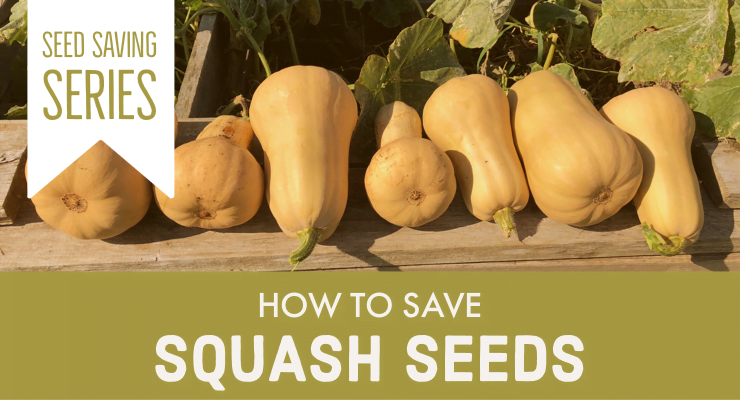
Benefits of Harvesting and Saving Butternut Squash Seeds
Harvesting and saving butternut squash seeds offer numerous benefits beyond the normal enjoyment of homegrown produce. From promoting sustainability and self-sufficiency to cost effectiveness and the ability to adapt and propagate preferred varieties, there are compelling reasons to engage in seed saving.
Sustainability and Self-Sufficiency
By saving and replanting butternut squash seeds, you contribute to a more sustainable and self-sufficient lifestyle. Growing your own food from saved seeds reduces reliance on commercial seed sources and promotes a cyclical, closed-loop system where you can produce your food year after year.
Cost Effectiveness
Saving butternut squash seeds is a cost-effective way to expand your vegetable garden without spending additional money on seed purchases each season. By setting aside a few mature fruits for seed saving, you can enjoy abundant harvests and save money in the long run.
Adapting and Propagating Preferred Varieties
Seed saving allows you to adapt and propagate the preferred characteristics of a particular butternut squash variety. Over time, you can selectively save seeds from the plants that exhibit the qualities you desire, such as taste, texture, and disease resistance. This process allows you to create a strain uniquely suited to your specific growing conditions and preferences.
Sharing Seeds with Others
Another advantage of saving butternut squash seeds is the opportunity to share your surplus seeds with others. By exchanging seeds with fellow gardeners, friends, and family members, you actively contribute to a vibrant and diverse seed-sharing community, supporting local ecosystems and horticultural traditions.
Preparing Butternut Squash Seeds for Planting
Once you have harvested and saved your butternut squash seeds, proper preparation is essential for optimal germination rates and successful plant growth. From seed viability testing and preventing seed contamination to seed treatment for disease prevention and storage length, these steps will ensure your seeds are ready for planting.
Seed Viability Testing
Before planting butternut squash seeds, it’s crucial to assess their viability. A simple viability test can help determine the percentage of seeds that are likely to germinate successfully. Place a damp paper towel or a cloth in a sealed plastic bag, add a few seeds, and store it in a warm place for a week. After this period, check how many seeds have sprouted to estimate viability.
Preventing Seed Contamination
To prevent seed contamination, it’s essential to store butternut squash seeds separately from other seed varieties. Cross-contamination may occur if different seeds are stored together, leading to undesirable hybrids. Keep each variety in its dedicated container or envelope to maintain the purity of the seeds.
Seed Treatment for Disease Prevention
Preventing the spread of diseases is crucial for the success of your butternut squash plants. Prior to planting, you can treat the saved seeds with a fungicide or natural homemade treatments to reduce the risk of disease transmission. Follow the product instructions carefully or research natural alternatives for effective seed treatment options.
Storage Length and Seed Viability
The viability of butternut squash seeds can vary depending on the specific variety and storage conditions. Generally, butternut squash seeds can remain viable for three to five years if stored properly. Regularly check stored seeds for signs of deterioration, such as discoloration or mildew, and discard any seeds that appear damaged or compromised.
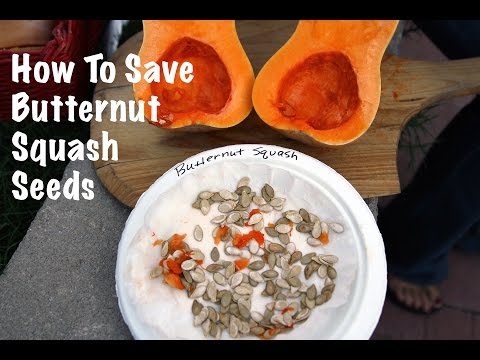
Common Challenges and Troubleshooting
While harvesting and saving butternut squash seeds is generally a straightforward process, there are some common challenges that you may encounter. From mature squash with unhealthy seeds to mold or fungus growth on seeds, insect infestation in stored seeds, and low germination rates, here are some troubleshooting tips.
Mature Squash with Unhealthy Seeds
If you encounter mature butternut squash with unhealthy or malformed seeds, it may be due to inadequate pollination or pest damage. To address this issue, focus on improving pollination techniques, ensuring proper spacing between plants, and implementing pest management strategies to promote healthier seed development.
Mold or Fungus Growth on Seeds
Mold or fungus growth on the stored seeds can be a sign of excess moisture or inadequate drying. To prevent this, make sure the seeds are thoroughly dried before storage. You can also use desiccants to maintain a dry environment within the storage container and regularly inspect the seeds for any signs of mold or fungus.
Insect Infestation in Stored Seeds
Insect infestation in stored seeds can occur if the seeds are not properly cleaned or dried before storage. To mitigate this problem, ensure you clean the seeds thoroughly and allow them to dry completely. Adding a small packet of desiccant to the storage container can help absorb any excess moisture that may attract pests.
Low Germination Rates
Low germination rates can be influenced by various factors, such as improper storage, poor seed quality, or unfavorable growing conditions. To improve germination rates, make sure the seeds are stored in a cool and dry environment, conduct seed viability tests before planting, and provide the seeds with optimal growing conditions, including sufficient sunlight, proper soil moisture, and appropriate temperatures.
Using Butternut Squash Seeds for Culinary Purposes
In addition to their value as a seed-saving resource, butternut squash seeds can be utilized in a variety of culinary applications. From roasting them as a snack to adding them to baked goods, sprouting them for salad toppings, or making butternut squash seed butter, these uses allow you to fully enjoy the benefits of your saved seeds.
Roasting Butternut Squash Seeds
Roasting butternut squash seeds is a simple and tasty way to enjoy them as a nutritious snack. After cleaning and drying the seeds, toss them in a bit of oil and seasonings of your choice, such as salt, pepper, or spices. Spread them in a single layer on a baking sheet and roast in a preheated oven at 350°F (175°C) for approximately 10-15 minutes until they are golden and crispy.
Adding Seeds to Baked Goods
Butternut squash seeds can add a delightful crunch and nutty flavor to various baked goods. Consider incorporating them into bread, muffins, cookies, or granola bars for an extra nutritious twist. After cleaning and drying the seeds, roughly chop or grind them before adding them to your favorite recipes.
Sprouting Seeds for Salad Toppings
Sprouted butternut squash seeds make a delicious and nutritious addition to salads. To sprout the seeds, rinse them thoroughly under running water and drain. Place them in a jar or a sprouting tray lined with damp paper towels and cover with a breathable lid or a mesh screen. Rinse and drain the seeds twice a day for about 3-5 days until they sprout. Once sprouted, add them to salads and enjoy their fresh and crunchy texture.
Making Butternut Squash Seed Butter
Butternut squash seed butter is a delicious and nutrient-rich alternative to traditional nut butter. To make the seed butter, roast the cleaned and dried seeds in a preheated oven at 350°F (175°C) for approximately 10-15 minutes until they are nicely toasted. After cooling, place the seeds in a food processor and process until smooth, adding a small amount of oil if necessary. Season with salt or sweeteners of your choice, such as honey or maple syrup, and enjoy the creamy and flavorful spread.
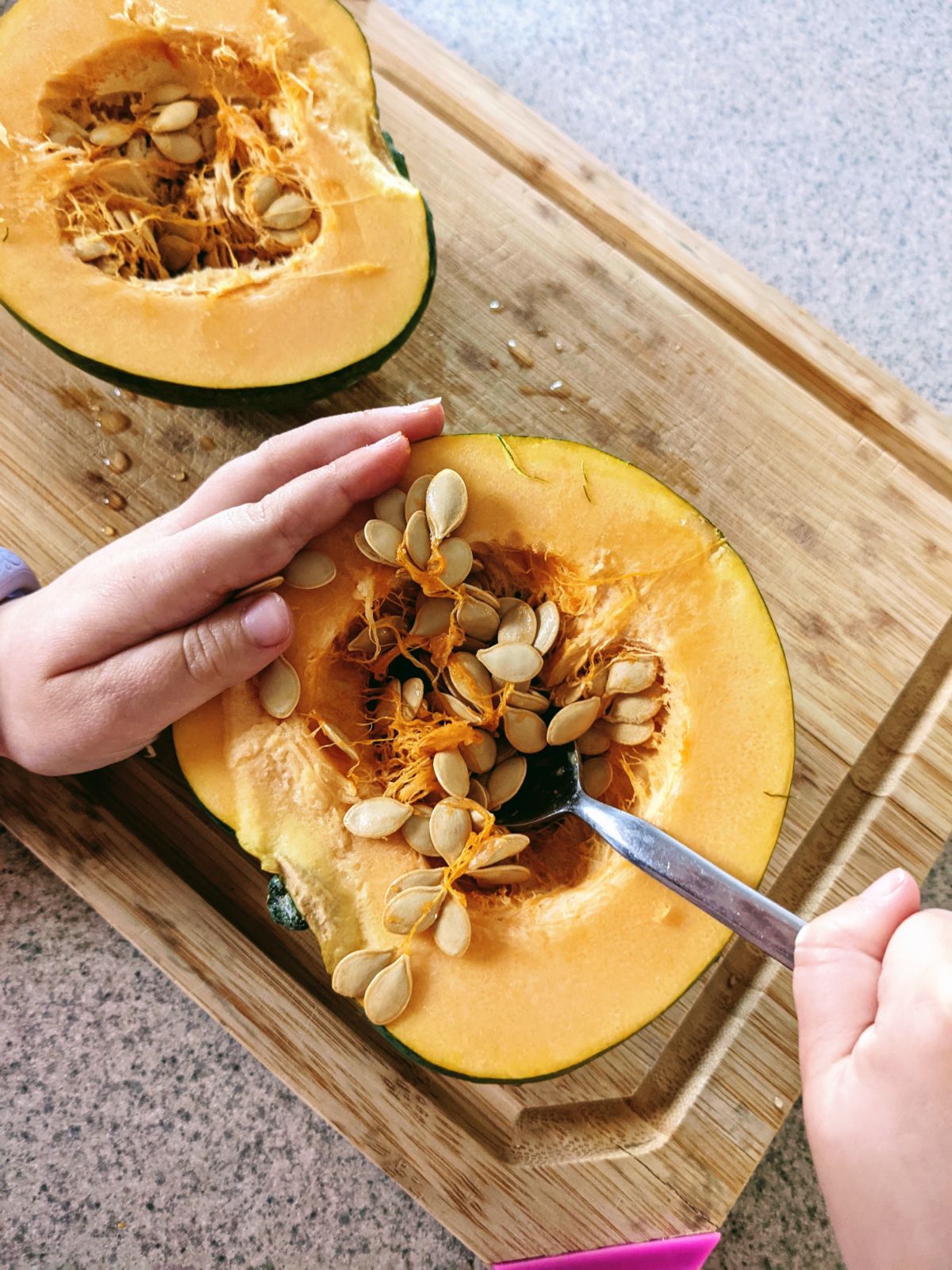
Exploring Other Squash Seed Saving Techniques
While this article primarily focuses on saving butternut squash seeds, it’s worth mentioning that similar techniques can be applied to other varieties of squash as well. By understanding the unique characteristics of different squash varieties and adapting the harvesting and seed saving methods accordingly, you can expand your seed-saving repertoire and ensure a diverse and thriving garden.
Saving Seeds from Different Squash Varieties
Each squash variety has its unique traits and requirements for seed saving. Experiment with different varieties, such as acorn squash, spaghetti squash, or buttercup squash, and explore the specific techniques needed for each type. By diversifying your seed collection, you can expand your culinary options and explore various flavors and textures.
Hybrid Seed Saving Challenges
Saving seeds from hybrid squash varieties can present challenges, as the resulting offspring may not exhibit the desired characteristics of the parent plant. Hybrid seeds are produced by cross-pollinating different varieties to achieve specific traits. Consequently, saved seeds from hybrid plants may vary in appearance and quality. It is generally recommended to save seeds from open-pollinated or heirloom varieties if you intend to maintain consistency in your seed stock.
Using Fermentation Method
Fermentation is a traditional seed-saving method that can be applied to various squash varieties. This technique involves allowing the seeds to ferment within their own pulp, breaking down any potential pathogens or inhibitors. After extracting the seeds, place them in a jar of water and let them ferment for a few days until the pulp separates and the viable seeds sink to the bottom. Rinse and dry the seeds before storage.
Dry Processing Method
The dry processing method is a straightforward technique that can be used for seed saving from different squash varieties. After removing the seeds from the squash, clean them, and spread them out on a clean, dry surface or a paper towel. Allow the seeds to air dry naturally for approximately one to two weeks before storing them in a suitable container. This method is particularly suitable for varieties with larger seeds and easier seed extraction.
Importance of Maintaining Genetic Diversity
Preserving genetic diversity in agriculture is vital for the continued sustainability and resilience of our food systems. By saving butternut squash seeds and supporting the preservation of heirloom varieties, we contribute to the conservation of plant genetic resources and protect against potential crop loss and vulnerability.
Preserving Heirloom Varieties
Heirloom varieties of butternut squash have been passed down through generations and retain historical and cultural significance. By saving and replanting the seeds of these heirlooms, we help preserve their unique traits, flavors, and resilience. This ensures that future generations can enjoy the diverse and fascinating array of butternut squash varieties.
Conserving Plant Genetic Resources
Saving and storing butternut squash seeds can contribute to the conservation of plant genetic resources. By maintaining a diverse seed collection, gardeners and seed savers actively participate in preserving and protecting the genetic diversity of butternut squash. This diversity allows for adaptation to changing environments, resistance to diseases and pests, and the potential for future plant breeding and improvement.
Protection against Crop Loss
Conserving a wide array of butternut squash genetic material helps safeguard against potential crop loss due to environmental factors, pests, or diseases. By maintaining a diverse seed bank, we increase the chances of having varieties that are adapted to various growing conditions and resistant to specific threats, reducing our vulnerability to crop failures.
Supporting Biodiversity
Saving butternut squash seeds and promoting seed diversity supports overall biodiversity by fostering a healthy ecosystem. By cultivating a variety of squash plants and sharing seeds, we contribute to the resilience of local environments and preserve the habitats of beneficial insects, birds, and other wildlife. This interconnectedness strengthens the web of life and ensures a sustainable future for all species.
In conclusion, harvesting and saving butternut squash seeds is a fulfilling process that not only provides you with a sustainable source of seeds but also offers numerous benefits. By following the proper techniques for harvesting, drying, and storing the seeds, you can maintain their viability and enjoy successful germination in future growing seasons. By exploring culinary uses for butternut squash seeds, you can make the most of your saved seeds while expanding your culinary repertoire. Furthermore, by promoting genetic diversity and supporting the preservation of heirloom varieties, you contribute to the conservation of plant genetic resources, protection against potential crop loss, and overall biodiversity. So why not embark on the journey of saving butternut squash seeds and enjoy the rewards that come with it? Happy seed saving!
